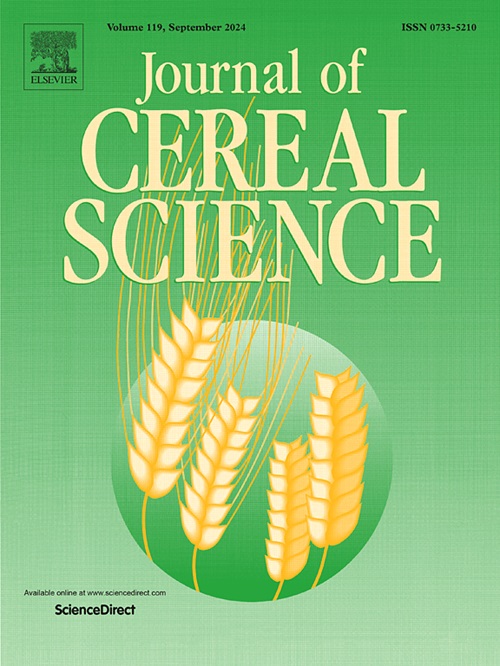Formulation and quality attributes of nutrient-enriched black wheat rusks
IF 3.7
2区 农林科学
Q2 FOOD SCIENCE & TECHNOLOGY
引用次数: 0
Abstract
The incorporation of biofortified colored wheat particularly black wheat (BW) into bakery products has gained attention due to increasing consumer demand for healthier snack options. This study investigated the development and evaluation of black wheat rusk focusing on its physical attributes, nutritional content, functional properties, and sensory acceptance and storage stability. Black wheat rusks showed significantly higher (p < 0.05) energy content, carbohydrates, protein, and fiber compared to conventional rusks. They exhibited enhanced functional properties, including increased DPPH inhibitory activity and total phenolic content. Black wheat rusks also contained higher levels of essential minerals like iron, zinc and potassium. Sensory evaluation revealed significant variations (p < 0.05) in hardness, texture, and overall acceptability. Black wheat rusks displayed darker coloration, increased loaf weight and hardness, but decreased loaf volume. Rusks remained microbiologically stable for 80 days at 25 °C when packaged in polyethylene bags. Black wheat can successfully produce bakery rusks with enhanced nutritional value and unique sensory characteristics, offering a healthier snack alternative that meets consumer demand for nutritious bakery products.

富营养化黑麦粉的配方及品质属性研究
由于消费者对更健康的零食选择的需求不断增加,将生物强化的有色小麦,特别是黑小麦(BW)掺入烘焙产品引起了人们的关注。本研究主要从物理特性、营养成分、功能特性、感官接受度和贮藏稳定性等方面对黑小麦果皮的开发与评价进行了研究。黑小麦的风险显著增加(p <;0.05)的能量含量、碳水化合物、蛋白质和纤维。它们表现出增强的功能特性,包括增加DPPH抑制活性和总酚含量。黑麦皮还含有更高水平的必需矿物质,如铁、锌和钾。感官评价显示了显著的差异(p <;硬度、质地和总体可接受性。黑麦果皮颜色较深,面包重量和硬度增加,但面包体积减小。当包装在聚乙烯袋中,在25°C下,木屑保持80天的微生物稳定性。黑小麦可以成功地生产出营养价值更高、感官特征独特的烘饼,提供了一种更健康的零食选择,满足了消费者对营养烘饼产品的需求。
本文章由计算机程序翻译,如有差异,请以英文原文为准。
求助全文
约1分钟内获得全文
求助全文
来源期刊

Journal of Cereal Science
工程技术-食品科技
CiteScore
7.80
自引率
2.60%
发文量
163
审稿时长
38 days
期刊介绍:
The Journal of Cereal Science was established in 1983 to provide an International forum for the publication of original research papers of high standing covering all aspects of cereal science related to the functional and nutritional quality of cereal grains (true cereals - members of the Poaceae family and starchy pseudocereals - members of the Amaranthaceae, Chenopodiaceae and Polygonaceae families) and their products, in relation to the cereals used. The journal also publishes concise and critical review articles appraising the status and future directions of specific areas of cereal science and short communications that present news of important advances in research. The journal aims at topicality and at providing comprehensive coverage of progress in the field.
 求助内容:
求助内容: 应助结果提醒方式:
应助结果提醒方式:


